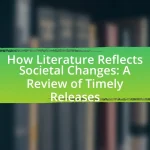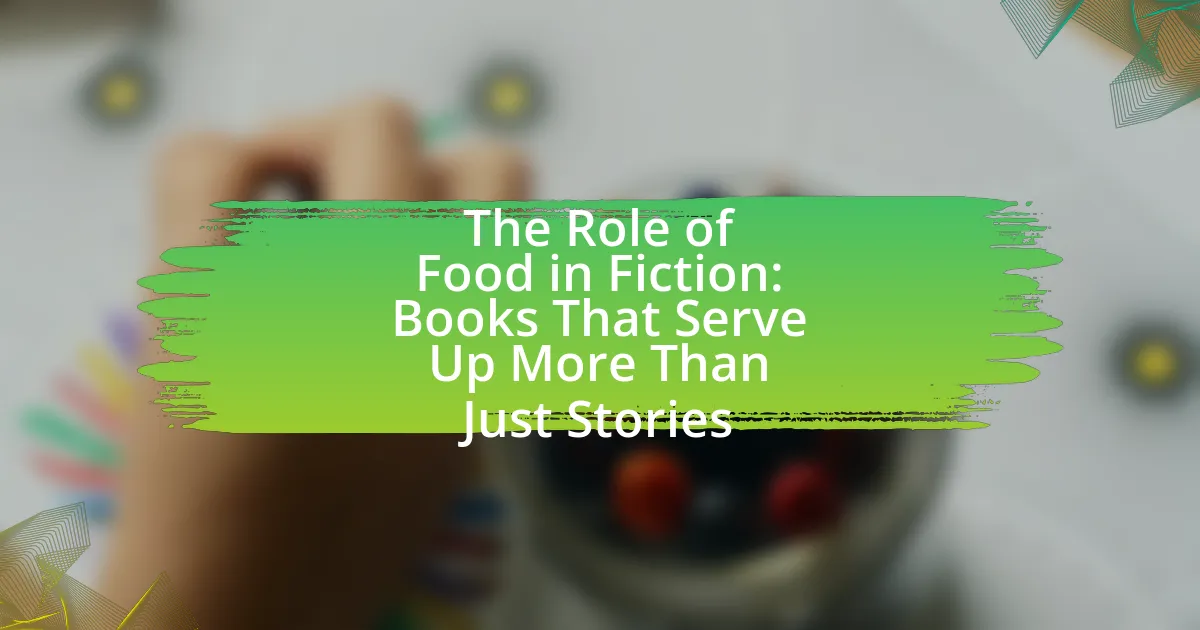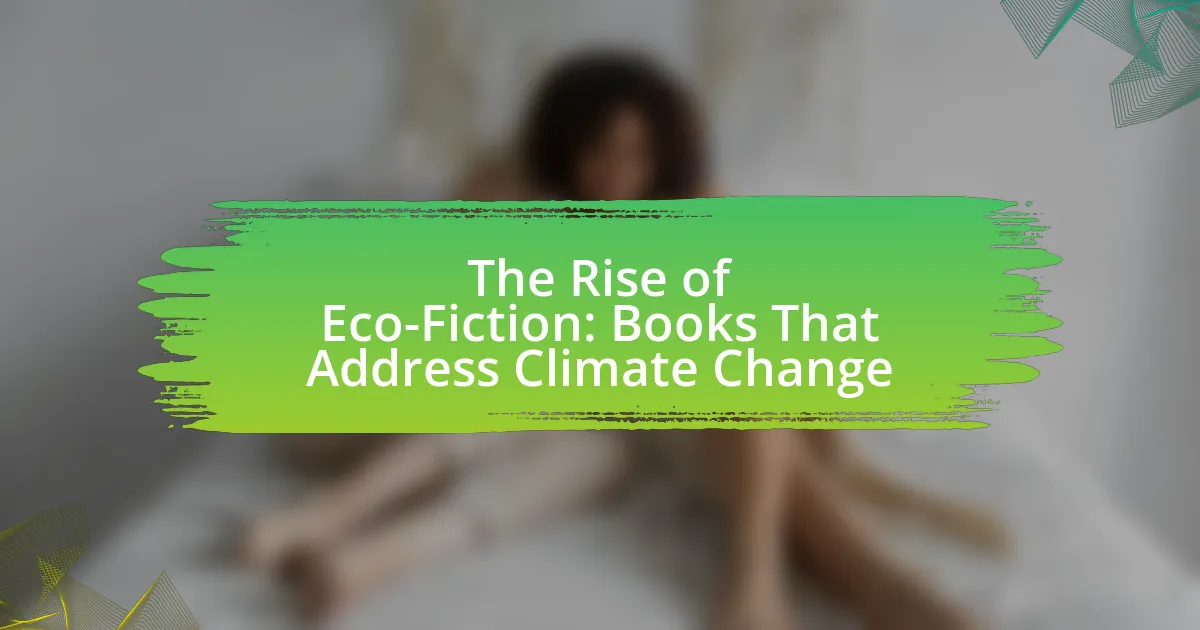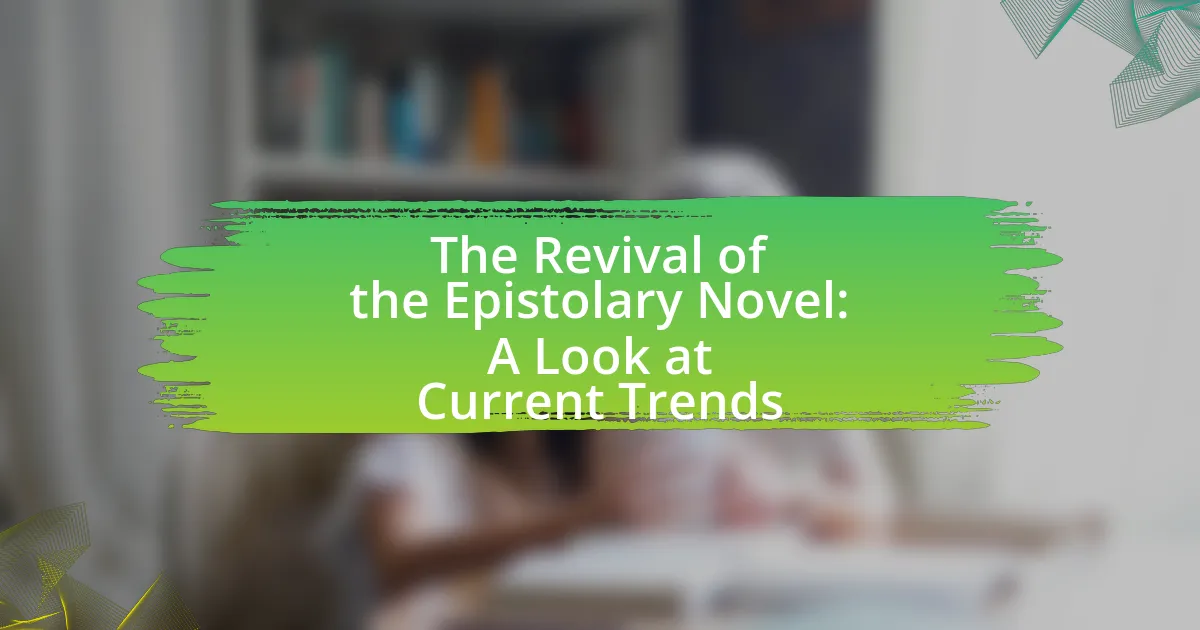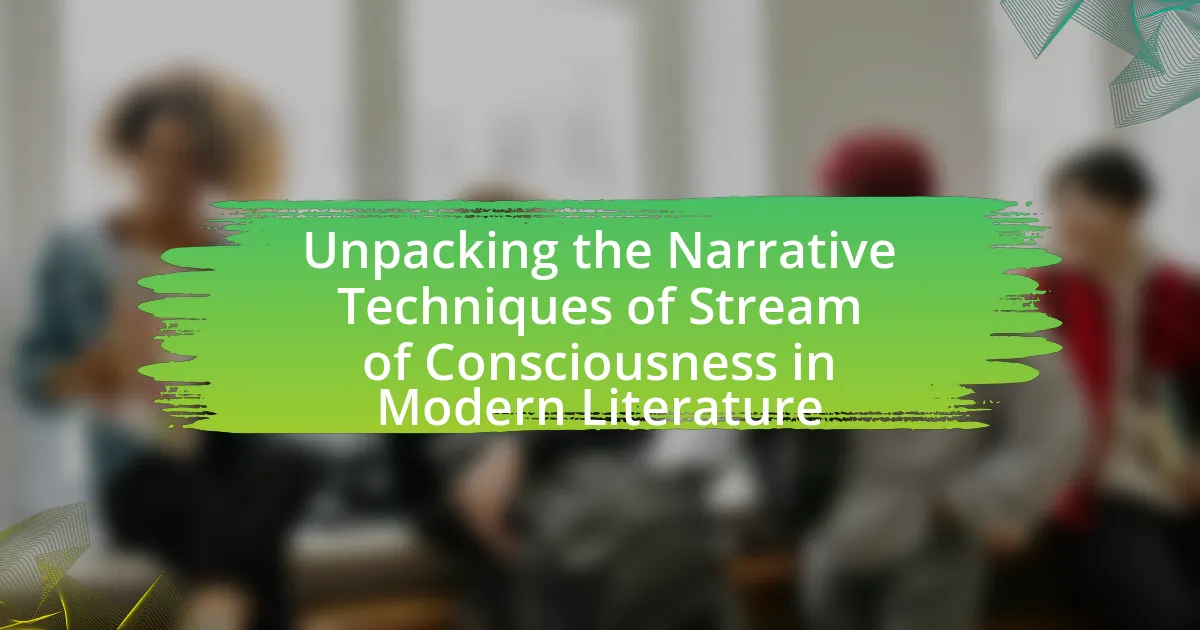The article examines the art of the short story, highlighting its defining characteristics such as brevity, emotional impact, and thematic focus. It differentiates short stories from other literary forms, emphasizing their concentrated narratives and key elements that contribute to their effectiveness. The discussion includes the importance of cultural contexts in thematic choices, recent notable anthologies that have captivated readers, and the influence of curated collections on emerging authors. Additionally, it outlines critical elements for successful anthologies and offers tips to enhance the reading experience, providing a comprehensive overview of contemporary short storytelling.
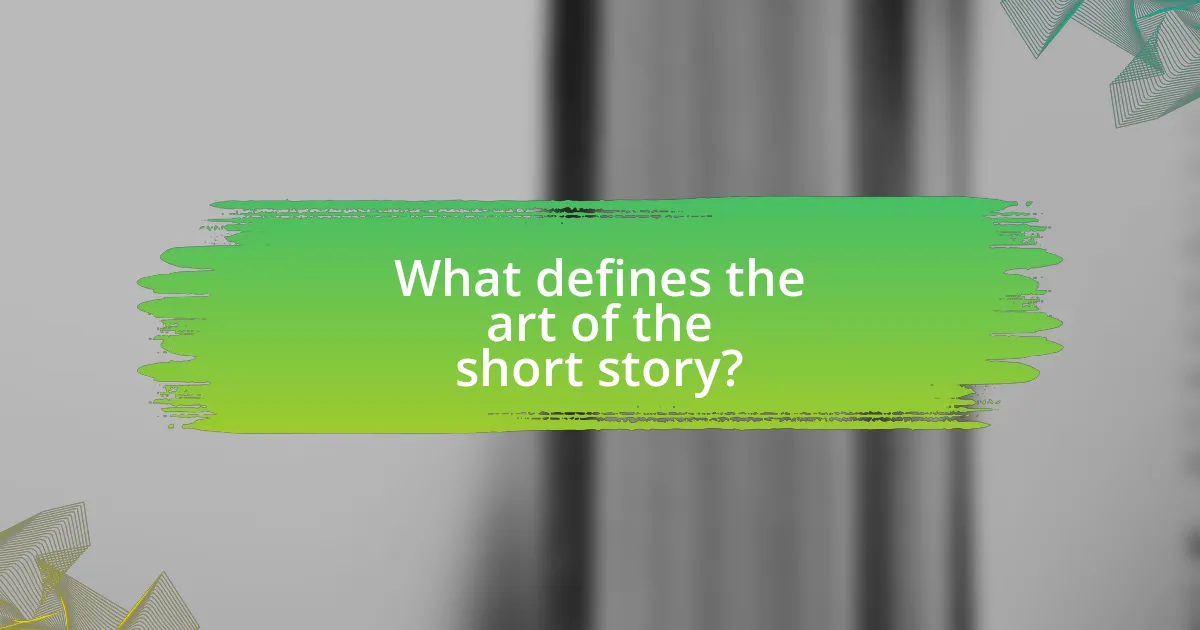
What defines the art of the short story?
The art of the short story is defined by its ability to convey a complete narrative within a limited word count, typically focusing on a single theme or character. This form of literature emphasizes brevity, precision, and emotional impact, often utilizing techniques such as symbolism, irony, and a twist ending to engage readers. Notable examples include works by authors like Edgar Allan Poe and Alice Munro, who masterfully illustrate complex human experiences in concise formats, demonstrating that a short story can evoke deep reflection and connection despite its brevity.
How do short stories differ from other literary forms?
Short stories differ from other literary forms primarily in their brevity and focus on a single theme or event. Unlike novels, which often explore multiple characters and subplots over an extended narrative, short stories typically concentrate on a specific moment or insight, allowing for a more intense emotional impact within a limited word count. For example, the average short story ranges from 1,000 to 7,500 words, while novels usually exceed 40,000 words. This concise structure necessitates a tight narrative and often leaves much to the reader’s interpretation, distinguishing short stories from longer forms that provide more extensive context and character development.
What are the key elements that make a short story effective?
The key elements that make a short story effective include a strong plot, well-developed characters, a clear setting, a central theme, and a compelling conflict. A strong plot provides a structured sequence of events that engages readers, while well-developed characters allow for emotional connections and relatability. A clear setting establishes the context and atmosphere, enhancing the story’s impact. The central theme conveys the underlying message or moral, and a compelling conflict drives the narrative forward, creating tension and interest. These elements work together to create a cohesive and memorable reading experience, as evidenced by successful short stories that resonate with audiences and often feature these characteristics prominently.
Why is brevity important in short storytelling?
Brevity is important in short storytelling because it allows for a concentrated expression of ideas and emotions, engaging readers quickly and effectively. Short stories often have limited word counts, which necessitates the elimination of extraneous details and the focus on essential elements, such as character development and plot progression. This concise format can create a powerful impact, as seen in works like Ernest Hemingway’s “Hills Like White Elephants,” where every word contributes to the underlying tension and theme. The effectiveness of brevity in short storytelling is supported by the fact that readers often appreciate stories that deliver a complete experience in a limited timeframe, making the narrative more memorable and resonant.
What themes are commonly explored in short stories?
Common themes explored in short stories include love, loss, identity, conflict, and the human condition. These themes resonate with readers as they reflect universal experiences and emotions. For instance, love often manifests in various forms, such as romantic love or familial bonds, while loss can encompass grief or the end of relationships. Identity themes frequently delve into personal and cultural exploration, highlighting the complexities of self-discovery. Conflict, whether internal or external, drives narratives and reveals character development. The human condition theme examines existential questions and moral dilemmas, prompting readers to reflect on their own lives. These themes are prevalent in anthologies, showcasing the diversity and depth of short storytelling.
How do authors choose themes for their short stories?
Authors choose themes for their short stories by drawing from personal experiences, societal issues, and universal human emotions. This selection process often involves reflecting on their own lives or observing the world around them, allowing them to connect with readers on a deeper level. For instance, many authors explore themes such as love, loss, identity, and conflict, which resonate widely across different cultures and time periods. Research indicates that themes rooted in shared human experiences tend to engage readers more effectively, as they evoke empathy and understanding.
What role do cultural contexts play in thematic choices?
Cultural contexts significantly influence thematic choices in literature by shaping the values, beliefs, and experiences that authors draw upon. These contexts provide a framework through which themes are developed, allowing writers to explore societal issues, identity, and human experiences that resonate with specific cultural backgrounds. For instance, themes of migration and identity in contemporary literature often reflect the cultural narratives of displacement and belonging, as seen in works by authors like Chimamanda Ngozi Adichie, who addresses Nigerian cultural contexts in her storytelling. This connection between cultural context and thematic choice is evident in how different cultures prioritize certain themes, such as community versus individualism, which can vary widely across societies.
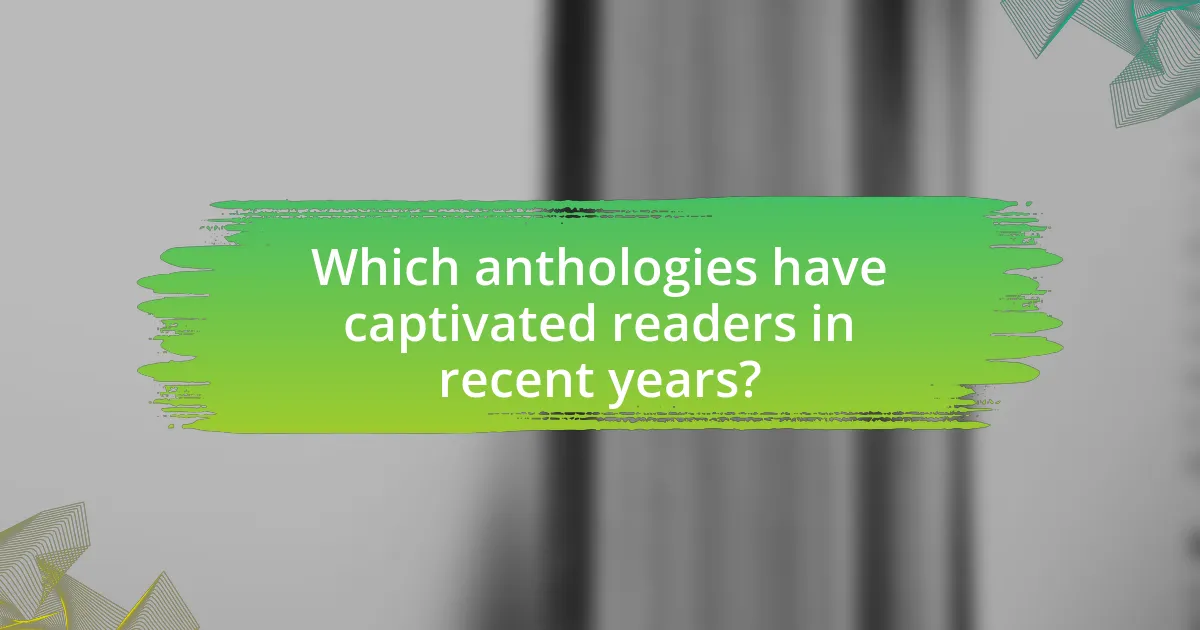
Which anthologies have captivated readers in recent years?
Recent anthologies that have captivated readers include “The Best American Short Stories” series, which consistently showcases outstanding contemporary writing, and “The Secret Life of Stories: From Don Quixote to the Lord of the Rings,” which explores the impact of storytelling across cultures. These collections have gained popularity due to their diverse selection of voices and themes, appealing to a wide audience. The “Best American” series, for instance, has been published annually since 1915 and is known for its rigorous selection process, featuring stories that resonate with current societal issues.
What are some notable short story anthologies published recently?
Some notable short story anthologies published recently include “The Secret Lives of Church Ladies” by Deesha Philyaw, which won the 2021 PEN/Faulkner Award, and “The Best American Short Stories 2022,” edited by Jesmyn Ward, showcasing a diverse range of contemporary voices. Additionally, “How to Tell a Story” by the acclaimed author and editor, John Edgar Wideman, offers a unique perspective on storytelling. These anthologies have received critical acclaim and recognition, highlighting their significance in the literary landscape.
How do these anthologies reflect current literary trends?
These anthologies reflect current literary trends by showcasing diverse voices and innovative narrative structures. The inclusion of underrepresented authors highlights a shift towards inclusivity in literature, aligning with contemporary movements advocating for social justice and representation. Furthermore, the experimentation with form and genre within these collections illustrates a departure from traditional storytelling, mirroring the evolving tastes of modern readers who seek fresh and engaging content. This trend is supported by the rise of digital platforms that promote accessibility and variety in literary consumption, allowing for a broader range of stories to reach audiences.
What makes these anthologies stand out to readers?
These anthologies stand out to readers due to their diverse selection of stories that showcase a range of voices and styles. The inclusion of both established and emerging authors allows readers to experience a rich tapestry of narratives, enhancing their engagement and emotional connection. Additionally, thematic cohesion within the anthologies often resonates with contemporary issues, making the stories relevant and thought-provoking. For example, anthologies that focus on specific themes, such as identity or social justice, provide readers with a curated experience that deepens their understanding of these topics. This combination of variety, relevance, and emotional depth is what makes these anthologies particularly captivating.
How do anthologies influence the perception of short stories?
Anthologies significantly influence the perception of short stories by curating diverse narratives that shape readers’ understanding and appreciation of the genre. By presenting a selection of works from various authors, anthologies expose readers to different styles, themes, and cultural perspectives, thereby broadening their literary horizons. For instance, anthologies like “The Best American Short Stories” series highlight exemplary writing and introduce emerging voices, which can elevate the status of short stories in the literary landscape. This curated approach not only validates the genre but also encourages readers to explore individual authors further, reinforcing the importance of short stories in contemporary literature.
What impact do curated collections have on emerging authors?
Curated collections significantly enhance the visibility and credibility of emerging authors. By featuring their work alongside established writers, these collections provide a platform that can lead to increased readership and recognition. For instance, anthologies like “Best American Short Stories” have historically propelled lesser-known authors into the spotlight, often resulting in book deals and broader publishing opportunities. This exposure is crucial for emerging authors, as it helps them build a readership and gain critical acclaim, which can be pivotal for their writing careers.
How do anthologies shape reader expectations of short stories?
Anthologies shape reader expectations of short stories by curating diverse narratives that highlight various themes, styles, and voices. This curated selection influences readers to anticipate a range of experiences, as anthologies often showcase both established and emerging authors, thereby setting a standard for quality and innovation. For instance, anthologies like “The Best American Short Stories” series are known for their rigorous selection process, which establishes a benchmark for literary excellence, leading readers to expect high-caliber storytelling. Additionally, the thematic organization of anthologies can guide readers’ interpretations and emotional responses, as seen in collections focused on specific topics such as identity or social issues, which further shapes their expectations regarding the content and depth of the stories presented.
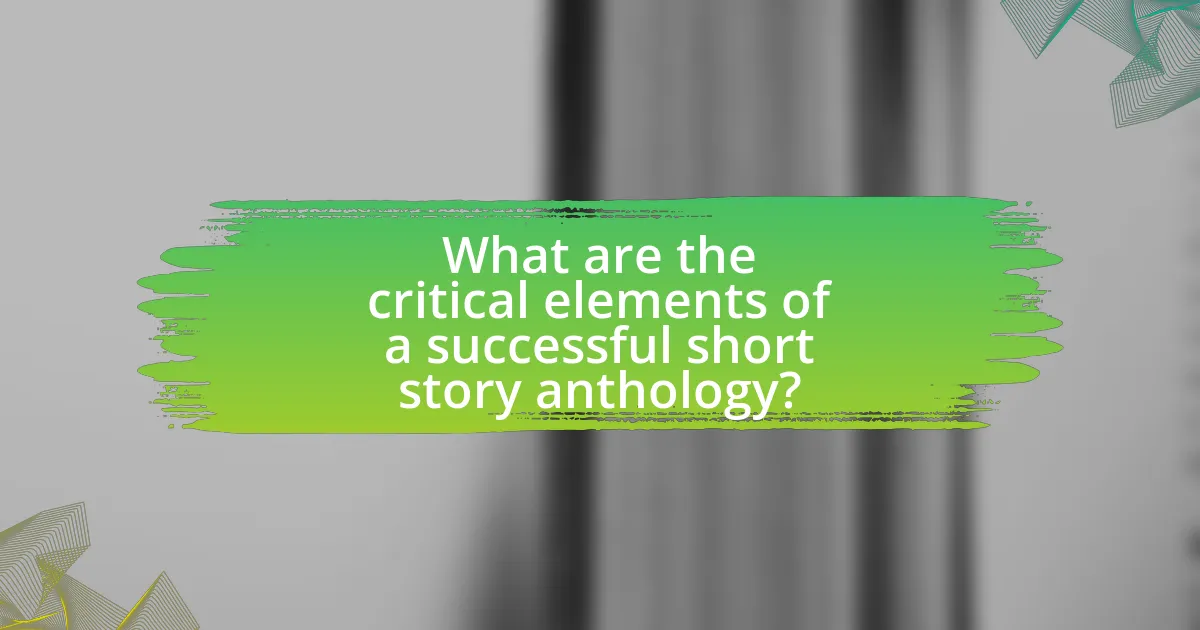
What are the critical elements of a successful short story anthology?
A successful short story anthology includes a cohesive theme, diverse voices, high-quality writing, and effective pacing. A cohesive theme unifies the stories, allowing readers to engage with a central idea or emotion, which enhances the overall reading experience. Diverse voices ensure representation and broaden perspectives, making the anthology appealing to a wider audience. High-quality writing is essential, as it reflects the skill of the authors and maintains reader interest. Effective pacing, achieved through the arrangement of stories, keeps the anthology dynamic and engaging, preventing monotony. These elements collectively contribute to the anthology’s success by creating a compelling and memorable collection for readers.
How is the selection process for stories typically conducted?
The selection process for stories is typically conducted through a combination of editorial review, thematic consideration, and audience engagement. Editors evaluate submissions based on criteria such as originality, narrative structure, and emotional impact, ensuring that selected stories align with the anthology’s theme and resonate with the target audience. For instance, anthologies often curate stories that reflect diverse voices and experiences, enhancing their appeal and relevance. This methodical approach ensures that the final collection captivates readers and maintains high literary standards.
What criteria do editors use to choose stories for anthologies?
Editors choose stories for anthologies based on criteria such as thematic relevance, originality, narrative quality, and the diversity of voices. Thematic relevance ensures that selected stories align with the anthology’s central theme, while originality distinguishes the work from existing literature. Narrative quality involves evaluating the writing style, character development, and plot structure. Additionally, diversity of voices enriches the anthology by including perspectives from various backgrounds, enhancing its appeal to a broader audience. These criteria are essential for creating a cohesive and engaging collection that resonates with readers.
How does diversity in storytelling enhance an anthology?
Diversity in storytelling enhances an anthology by providing a broader range of perspectives and experiences, which enriches the overall narrative landscape. This variety allows readers to engage with different cultures, ideologies, and emotional experiences, fostering empathy and understanding. Research indicates that anthologies featuring diverse voices can attract a wider audience, as they resonate with readers from various backgrounds, thereby increasing the anthology’s relevance and impact. For instance, anthologies like “The Best American Short Stories” have included works from authors of diverse ethnicities and genders, demonstrating that such inclusivity not only reflects societal realities but also elevates the quality and depth of the stories presented.
What role does the introduction play in an anthology?
The introduction in an anthology serves to contextualize the collection, providing readers with insights into the themes, purpose, and significance of the selected works. It often outlines the editor’s vision and may include background information about the authors or the historical context of the stories. This foundational information enhances the reader’s understanding and appreciation of the anthology, guiding their interpretation of the narratives presented. For instance, an anthology focused on a specific cultural theme may include an introduction that explains the cultural significance of the stories, thereby enriching the reader’s experience.
How can an introduction set the tone for the reader’s experience?
An introduction can set the tone for the reader’s experience by establishing the mood, style, and context of the narrative. By using specific language, imagery, and thematic elements, the introduction engages the reader’s emotions and expectations. For instance, a dark, suspenseful opening can create an atmosphere of tension, while a light-hearted, whimsical introduction can evoke feelings of joy and curiosity. Research indicates that first impressions significantly influence reader engagement; studies show that readers often form their perceptions of a story within the first few sentences, which underscores the importance of a well-crafted introduction in shaping their overall experience.
What insights should an introduction provide about the anthology’s theme?
An introduction should provide insights into the anthology’s theme by clearly articulating the central ideas and motifs that unify the selected stories. This includes outlining the emotional, cultural, or social contexts that the anthology explores, which helps readers understand the significance of the narratives presented. For instance, if the anthology focuses on themes of identity and belonging, the introduction should highlight how these themes manifest across different stories and characters, thereby setting the stage for deeper engagement with the text. This approach not only contextualizes the anthology but also invites readers to reflect on their own experiences in relation to the themes discussed.
What tips can enhance the reading experience of short story anthologies?
To enhance the reading experience of short story anthologies, readers should approach the collection with an open mind and a willingness to engage with diverse narratives. Engaging with various themes and styles allows readers to appreciate the unique voice of each author, which is crucial in anthologies that often showcase a range of perspectives. Additionally, taking notes or reflecting on each story can deepen understanding and retention of the material, as studies indicate that active engagement with texts improves comprehension. Lastly, discussing the stories with others can provide new insights and interpretations, enriching the overall experience.

